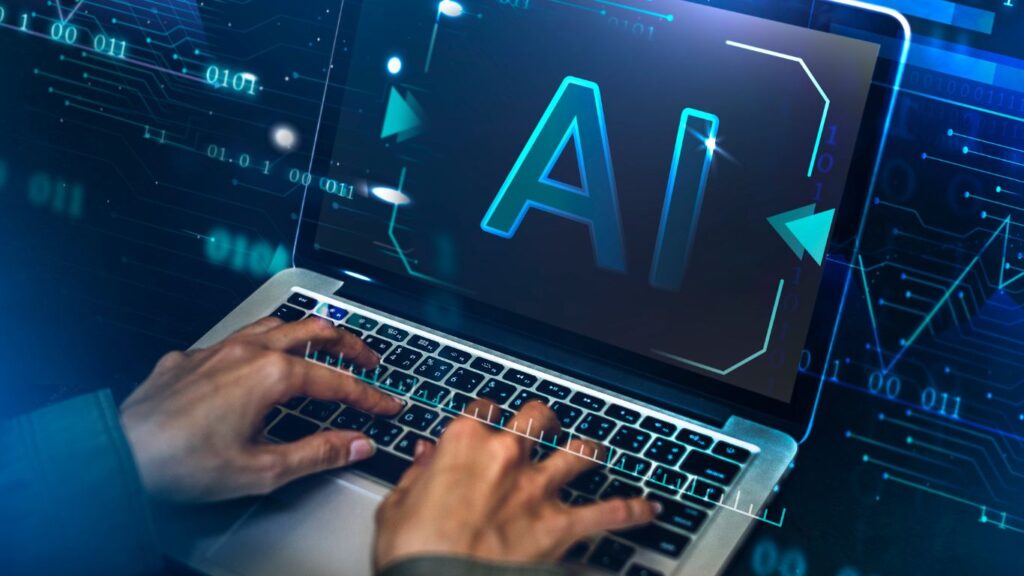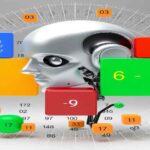Artificial Intelligence (AI) text detection is a revolutionary technology that combines Optical Character Recognition (OCR) with machine learning algorithms to convert printed or handwritten text into digital, editable, and searchable data. This technology has broad applications across various domains, from digitizing physical documents to enhancing digital accessibility.
In this guide, we will explore the key concepts, technologies, and methodologies behind AI text detection, along with its use cases, challenges, and future advancements.
Key Concepts and Technologies Involved
Optical Character Recognition (OCR)

At the heart of AI text detection lies Optical Character Recognition (OCR). OCR is a technology that converts different types of documents—such as scanned paper documents, PDF files, or images captured by a digital camera—into machine-encoded text. It uses pattern recognition to identify and extract text from images and convert it into a format that computers can manipulate.
Natural Language Processing (NLP)
Natural Language Processing (NLP) is a branch of AI that deals with the interaction between computers and humans through natural language. NLP enables machines to read, understand, and derive meaning from human languages. In AI text detection, NLP helps understand context, recognize phrases, and improve the overall accuracy of text recognition.
Machine Learning Algorithms
Machine learning algorithms play a crucial role in enhancing OCR capabilities. By training on large datasets of text and images, these algorithms learn to recognize patterns in characters and words. Over time, the models improve their accuracy in identifying and extracting text from diverse sources.
Everyday Use Cases for AI Text Detection
Digitizing Physical Documents
AI text detection is widely used to digitize physical documents, making them searchable and editable. Libraries, archives, and businesses use this technology to convert books, records, and other printed materials into digital formats.
Automating Data Entry
Organizations use AI text detection to automate data entry processes by extracting text from invoices, receipts, and forms. This reduces manual labor and minimizes errors.
Enhancing Accessibility
AI text detectors convert printed text into audio, benefiting visually impaired individuals. This application enhances digital accessibility and inclusivity.
Improving Security
Text-based authentication and fraud detection systems use AI text detection to verify identities and detect anomalies in documents.
Real-time Language Translation
AI text detection enables real-time language translation by recognizing and translating text from one language to another, offering instant communication solutions across language barriers.
Technical Details of OCR and AI Integration
Training Data and Machine Learning Algorithms

Machine learning models are trained on extensive datasets containing various fonts, languages, and handwriting styles. This training enables the models to learn and recognize patterns, improving their text detection accuracy over time.
Text Preprocessing and Feature Extraction Methods
Before feeding the text into machine learning models, it undergoes preprocessing steps such as noise reduction, binarization, and normalization. Feature extraction methods identify relevant features from the text, such as edges, shapes, and textures, which are essential for accurate recognition.
Neural Network Architecture for Text Detection
Advanced neural networks, such as Convolutional Neural Networks (CNNs) and Recurrent Neural Networks (RNNs), are employed in AI text detection systems. CNNs are helpful for image classification and feature extraction, while RNNs handle sequential data, making them suitable for recognizing text sequences.
Validation and Testing of the AI Model
AI text detection models undergo rigorous validation and testing to ensure their accuracy and reliability. This process involves evaluating the model’s performance on various test datasets and fine-tuning it to minimize errors.
Challenges in AI Text Detection
Accuracy and Reliability
Recognizing diverse fonts, languages, and handwriting styles poses a significant challenge for AI text detection systems. Ensuring high accuracy and reliability in different contexts is critical.
Handling Low-Quality Images
Images with low resolution, poor lighting, or perspective distortion can affect OCR performance. Developing robust algorithms that handle such variations is essential.
Balancing Speed and Efficiency
Real-time applications require fast and efficient text detection algorithms. Balancing speed and accuracy is vital for optimal performance.
Privacy Concerns
Processing sensitive text information raises privacy concerns. Ensuring data security and compliance with privacy regulations is paramount.
Integration with Existing Systems
Integrating AI text detection systems with existing workflows and software can be challenging. Seamless integration requires careful planning and execution.
Limitations and Future Advancements in AI Text Detection
Limitations
Despite significant advancements, AI text detection systems still face limitations in handling complex layouts, heavily stylized fonts, and highly degraded text. Additionally, the technology’s dependency on large annotated datasets for training poses challenges in resource-constrained environments.
Future Advancements
Future advancements in AI text detection may include:

- Improved Algorithms: Development of more sophisticated algorithms capable of handling diverse and complex text scenarios.
- Multimodal AI: Combining text detection with other AI technologies, such as speech recognition and computer vision, to enhance overall performance.
- Better Privacy Measures: Enhanced techniques for anonymizing and securing sensitive information during text detection processes.
- Increased Accessibility: Continued efforts to make AI text detection more accessible and affordable for smaller organizations and resource-limited settings.
FAQs
What is AI text detection?
AI text detection uses artificial intelligence to recognize and extract text from images, physical documents, and other visual media. It combines OCR (Optical Character Recognition) with advanced machine learning algorithms to improve accuracy and efficiency.
How does AI text detection improve over time?
AI text detection systems improve over time through machine learning. By training on large datasets with varied text samples, the algorithms learn to identify patterns and enhance their accuracy in recognizing text in different contexts.
Can AI text detection handle handwritten text?
Yes, modern AI text detection systems can recognize handwritten text. However, the accuracy may vary depending on the quality and legibility of the handwriting. Continuous training and advancements in algorithms improve the system’s ability to handle diverse handwriting styles.
Is AI text detection secure for sensitive information?
AI text detection systems can be secure if appropriate privacy measures are in place. Ensuring data encryption, compliance with privacy regulations, and implementing anonymization techniques can protect sensitive information during text detection processes.
What are the everyday use cases for AI text detection?
Everyday use cases for AI text detection include digitizing physical documents, automating data entry, enhancing accessibility, improving security, and enabling real-time language translation. These applications streamline workflows and make information more accessible.
What challenges does AI text detection face?
Challenges in AI text detection include:
- We are ensuring accuracy across diverse fonts and languages.
- I am handling low-quality images.
- It is balancing speed and efficiency.
- We are addressing privacy concerns.
- I am integrating with existing systems.
Continuous improvement and innovation are crucial to overcoming these challenges.
What future advancements can be expected in AI text detection?
Future advancements in AI text detection may include more sophisticated algorithms, the integration of multimodal AI technologies, enhanced privacy measures, and efforts to increase accessibility and affordability, especially for smaller organizations and resource-limited environments.
Conclusion: Impact and Potential of AI Text Detectors
AI text detection is transforming how businesses and individuals interact with text data. By automating tedious tasks, improving accessibility, and providing valuable insights, this technology enhances efficiency and productivity across various domains.
As AI text detection continues to evolve, its applications and impact will only expand, offering even more powerful tools for digitizing, understanding, and leveraging text information in the modern world.
Ready to explore the potential of AI text detection for your business? Dive into the future of text recognition and see how it can revolutionize your operations.











